MXA INTERVIEW: WARREN REID’S CAREER WAS A FAMILY AFFAIR
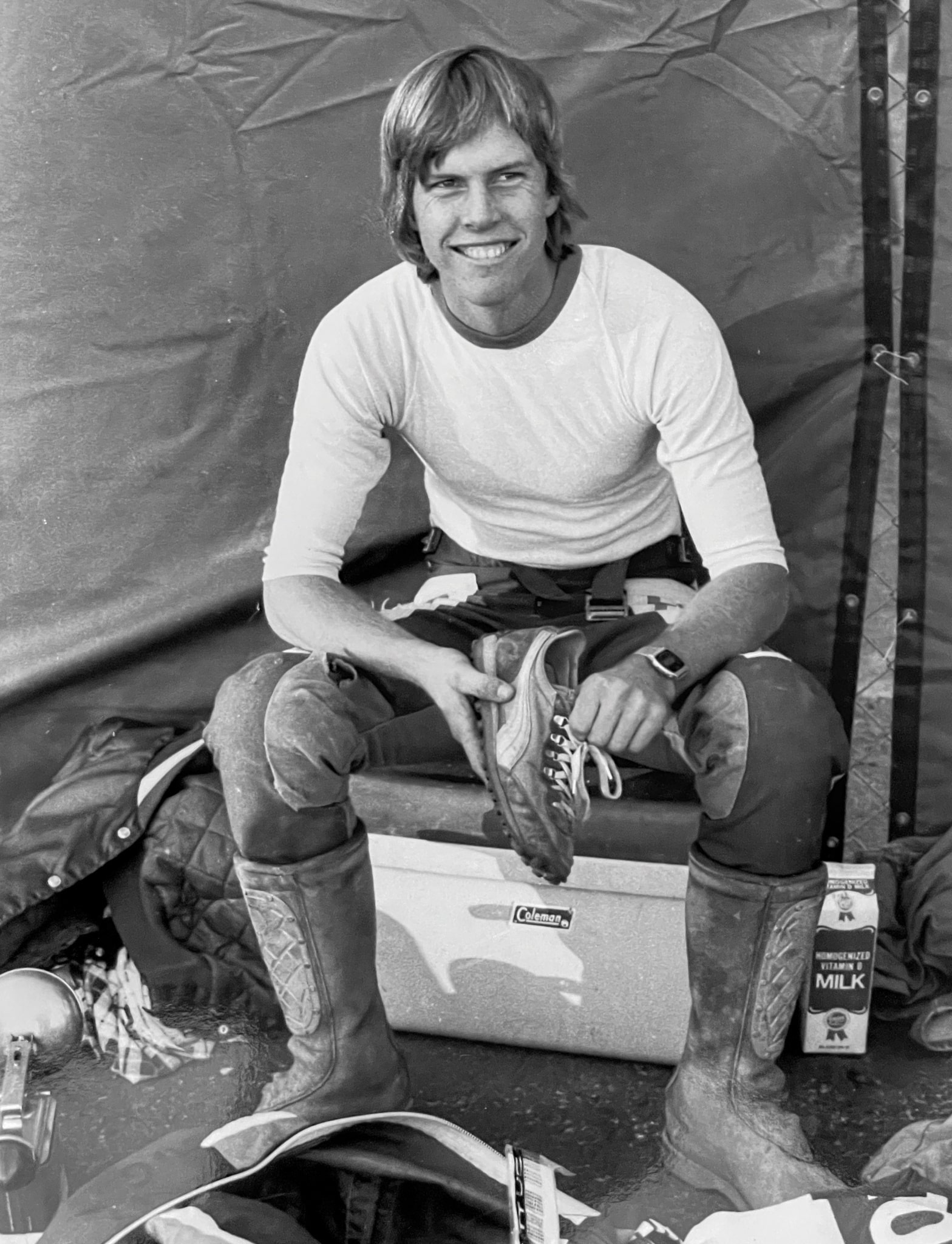 In 1973, Warren won the third race he ever entered, and in 1974, he won the 125 Expert class at the California High School Championships.
In 1973, Warren won the third race he ever entered, and in 1974, he won the 125 Expert class at the California High School Championships.
BY JIM KIMBALL
WARREN, HOW WERE YOU INTRODUCED TO MOTOCROSS? We all knew about motocross when we were kids, but we did not really see it. We would hear about it, and then it would be on TV once in a blue moon. Then, one of the neighbor kids got a lawnmower-powered minibike. Ironically, his name was Mike Lindell. Not the “My Pillow” guy, but the same name and same spelling. Lindell was the first one who had one. He was 12, and the rest of our group was 10.
Everybody had Stingray bicycles, and everybody wanted a minibike. Right about that time my parents split up, and that was not a good time. We were all trying to live a normal life with all this stress going on. After the split, my dad bought a used Yamaha Mini Enduro. I started riding that when the divorce got bad. My dad, Bud Reid, ended up moving back East and left it with us.
THAT MUST HAVE BEEN A DIFFICULT TIME. Yes, but the minibikes were what really saved me. My mom Carol owned a house. She was very smart; the house and the equity came first—no matter what. Landscaping came second, furniture came third, repainting the house all came after paying the bills. She sold her car and bought a pick-up truck and a Yamaha 175. All her friends were dirt bike people. Some guys that worked for Honda became family friends through other dirt biking friends, and soon we had this regular group of riders. I was the kid. We went riding in the desert every weekend. I was riding all day Saturday and all day Sunday for years, every weekend.
RIDING ALL THE TIME DEVELOPED YOU. I finally got a competitive bike, which came because one of the people in our group was Dennis Blanton. Dennis worked for Honda and was Marty Tripes’ mechanic. Jon R. (Rosenstiel) was Marty Smith’s mechanic at the time, and we met many of the Honda guys. I had a Honda SL125 by this time and was 14. I was kicking butt within our riding group, and they were riding CZ 250s. I thought I was king of the hill, but I did not really know because I was not racing.
DID YOU THEN RACE? Our riding friends kept saying to my mom, “He needs to race.”
My mom told me, “We have enough money to ride in the desert, but that’s all we’ve got.”
Dennis and Wendy Blanton had just gotten married. Dennis said, “Wendy and I can afford the bike. We will buy a CR125, and we will take Warren racing and see how he does.”
YOUR MOM WAS PRETTY PIVOTAL IN YOUR RACING. If motorcycles had come my way without the mom that I have, I would have still become a motorcycle racer. Whether it ever would have gotten to the point it did, I can’t say. There are so many things that can happen to a career, and although my mom did not manage my career, she kept it from going in the ditch.
WHAT CAME NEXT? My mom and John R. started dating in early 1973, right about the time Dennis and Wendy bought me a CR125 to take me racing. At that first race, I almost won the third moto, and that was as an Intermediate. I never raced as a Beginner or Junior. I went from never racing to my first race as a CMC Intermediate and almost won my third moto. The next week at Ascot, I won the first moto by 200 yards. Then, at my third race, OCIR, I won first overall in the CMC 125 Intermediate class.
WHEN DID YOU TURN PRO? I gradually started moving up, and then at the end of 1974, I won the California State High School Championship as a junior in the 125 Expert class; Broc Glover was third. I was a junior and he was a freshman.
In 1975, when Honda was testing, they would invite me to go, and I would ride with Gaylon Mosier, Rex Staten, Marty Smith and Tommy Croft. All those guys were so cool and so nice. There was none of that prima-donna stuff.
By the time the 1975 125 Nationals came along, Marty Smith was the National Champion and Jon R. was his mechanic. The first National was at Hangtown. My mom and I drove the van up, and Jon R. went up with the factory team. I had my FMF Honda in the back, and Donnie Emler was there. It was a big mud race, and I ended up getting fourth overall at my first National, which was two years from the first race of my life.
LET’S HEAR MORE ABOUT THAT SUMMER OF 1975. I had some bad races in the middle, but it was only a seven-race series. At the last race in New Orleans, I got fourth again. Danny Turner was second, and I think Nils-Arne Nilsson was third and I was fourth. That was the race where Bob Hannah passed out from heat stroke. I remember passing him as he was running into the snow fence, lying on his seat and going 90 degrees in the opposite direction of the track. This was at the last 125 National in 1975. It was humid and ridiculously hot. I ended the year ninth in 125 points.
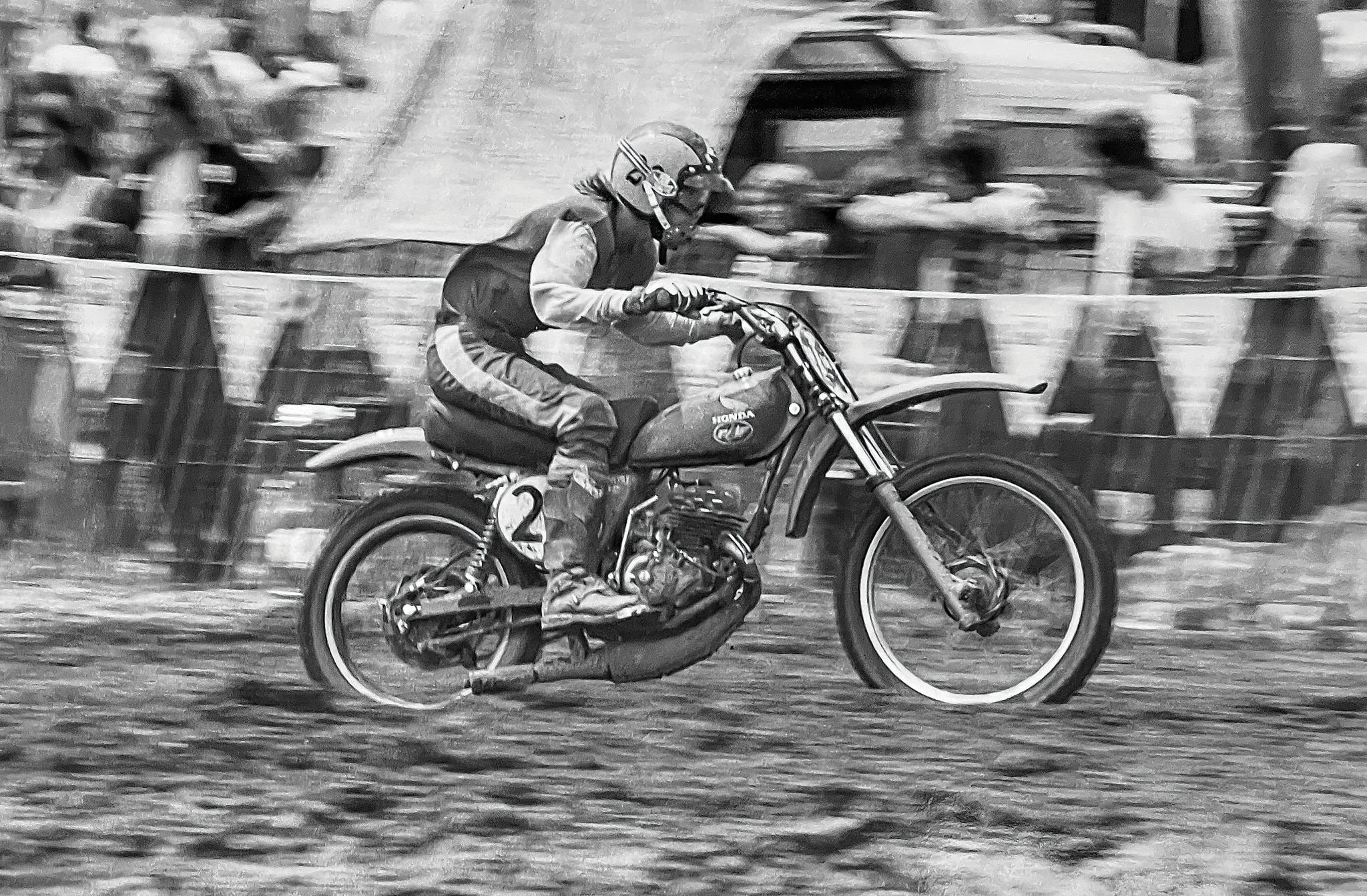 This is Warren on his 1975 FMF Honda CR125
This is Warren on his 1975 FMF Honda CR125
“I FINALLY GOT A COMPETITIVE BIKE, WHICH CAME BECAUSE ONE OF THE PEOPLE IN OUR GROUP WAS DENNIS BLANTON. DENNIS WORKED FOR HONDA AND WAS MARTY TRIPES’ MECHANIC. JON R. (ROSENSTIEL) WAS MARTY SMITH’S MECHANIC AT THE TIME, AND WE MET MANY OF THE HONDA GUYS. I HAD A HONDA SL125 BY THIS TIME AND WAS 14.”
HOW WAS THE 1976 SEASON? For 1976, I was a full FMF rider. Jon R. was in Europe working on Marty Smith’s 125 World Championship effort, while Dave Arnold was Marty’s mechanic here in the States. Marty is well known for his attempt to win both the 125 World Championship and the AMA National Championship in the same year. It was a nearly impossible task.
After I finished sixth in the 1976 Nationals, Honda had an old Type-1 RC250 that was just laying around, and the Honda guys said, “If Warren wants to race this, let him.”
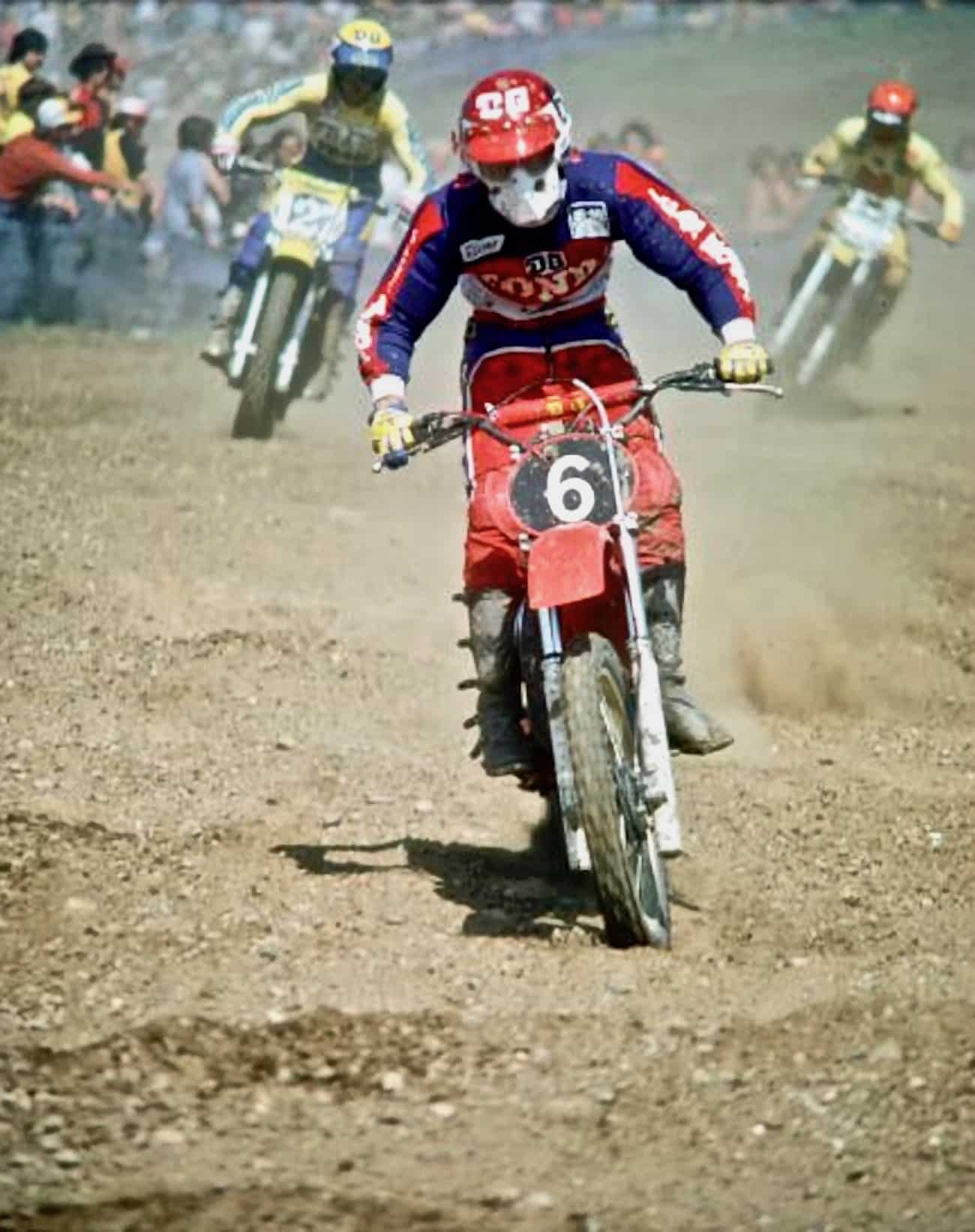 Warren Reid (6) on a Honda RC250 works bike.
Warren Reid (6) on a Honda RC250 works bike.
Even though I was riding for FMF, I took the old RC250 Type-1 and went to the last five Trans-AMAs. They had 10 Trans-AMAs that year, and I went to the last five because I was still in school and could not miss that much. Guys like Steve Wise, Gary Jones, Danny LaPorte, and Jimmy Ellis were racing the 250 Support class also.
I won the first moto at Saddleback, and I got fourth or fifth in the second moto and got second overall behind LaPorte. I beat Ellis, who was the Supercross Champion. I did not even have a mechanic. The only way I knew the moto was ending was when I came around and the finish-line flagger put up a two-lap board. Honda offered me a 125 ride for 1977.
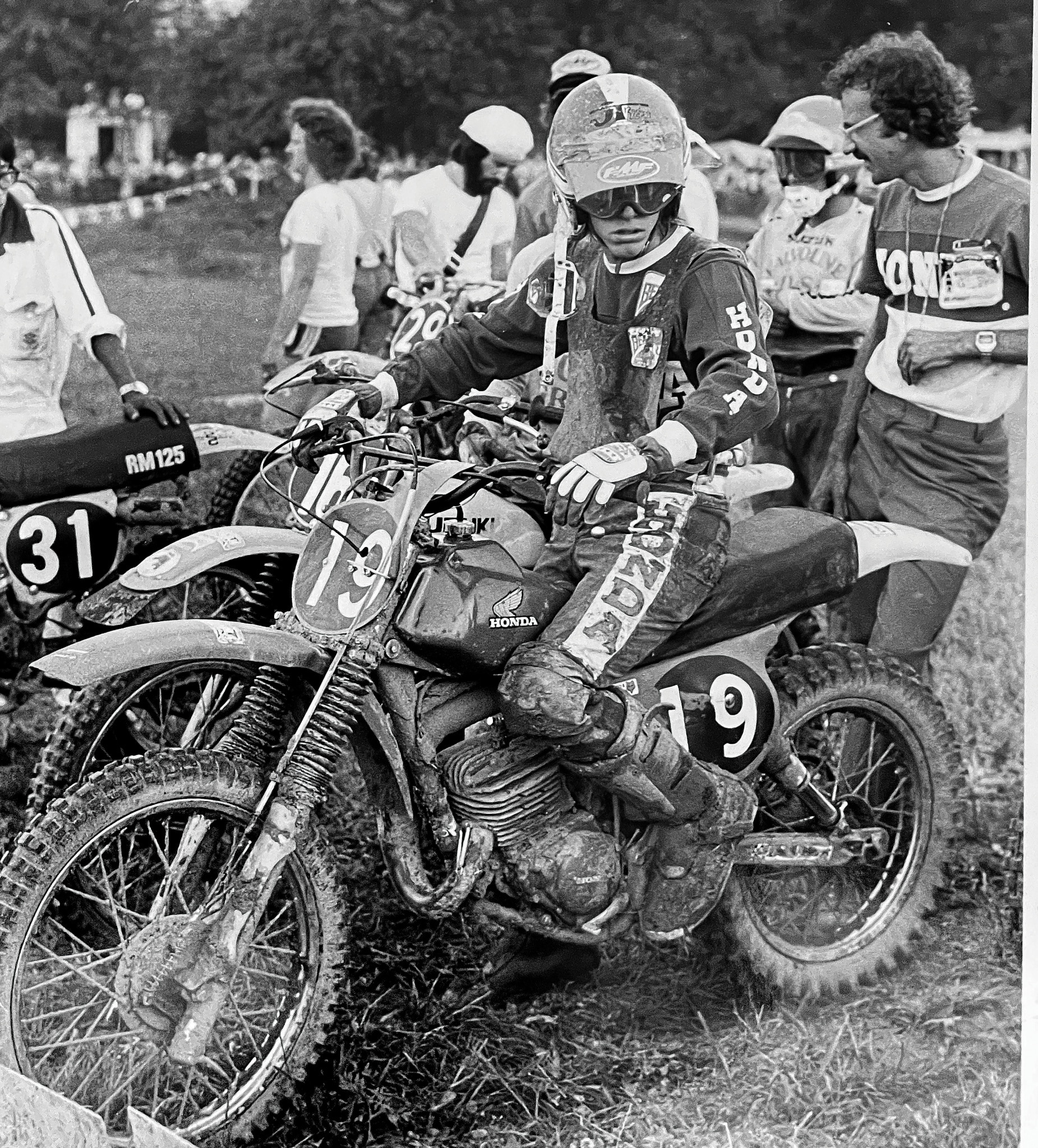 Warren at the Mid-Ohio 125 Grand Prix on a works Honda with his stepfather, Jon Rosenstiel, behind him.
Warren at the Mid-Ohio 125 Grand Prix on a works Honda with his stepfather, Jon Rosenstiel, behind him.
HOW WOULD YOU CHARACTERIZE YOUR TIME AT TEAM HONDA? I was there for three years, and there were huge changes going on the entire time. It made it tough as far as bike setup went. The team dynamics changed from year to year with new managers, new riders, new mechanics and new upper management. After 1979, many guys left the team.
WHY WAS EVERYBODY LEAVING? I will give you an example of what was super complicated for us. My good friend Steve Wise joined me at Honda for the 125 Nationals in 1978. Basically, the Honda CR125 had not changed since 1975. So, in 1978, we got these Works 125s with a 23-inch front wheel. Our practice bikes had a 21-inch front wheel, and they were still the 1973–1974-era CR125s. Our works bikes were completely different from our practice bikes. After Steve went back to the 21-inch front wheel, I took the 23 and won the 125 National with it. I liked it, but there were no tire choices. We could not get good 23-inch front tires.
DID HONDA DROP THE 23-INCH FRONT WHEEL FOR THE NEXT SEASON? Yes and no. In 1979, the works bike went back to the 21-inch wheel, but my practice bike had a 23-inch front wheel because the stock 1979 CR125 came with a 23. I was also racing a pre-production CR250 with a 21-inch front wheel in Supercross and then switching to a 23-inch for the 125 outdoors. I am still surprised that I did as well as I did. But I am still frustrated; I thought I should have done better. I ended up fourth in the Nationals in 1979 and had a couple podiums. As I said, by the end of 1979, we were all just at our wits’ end.
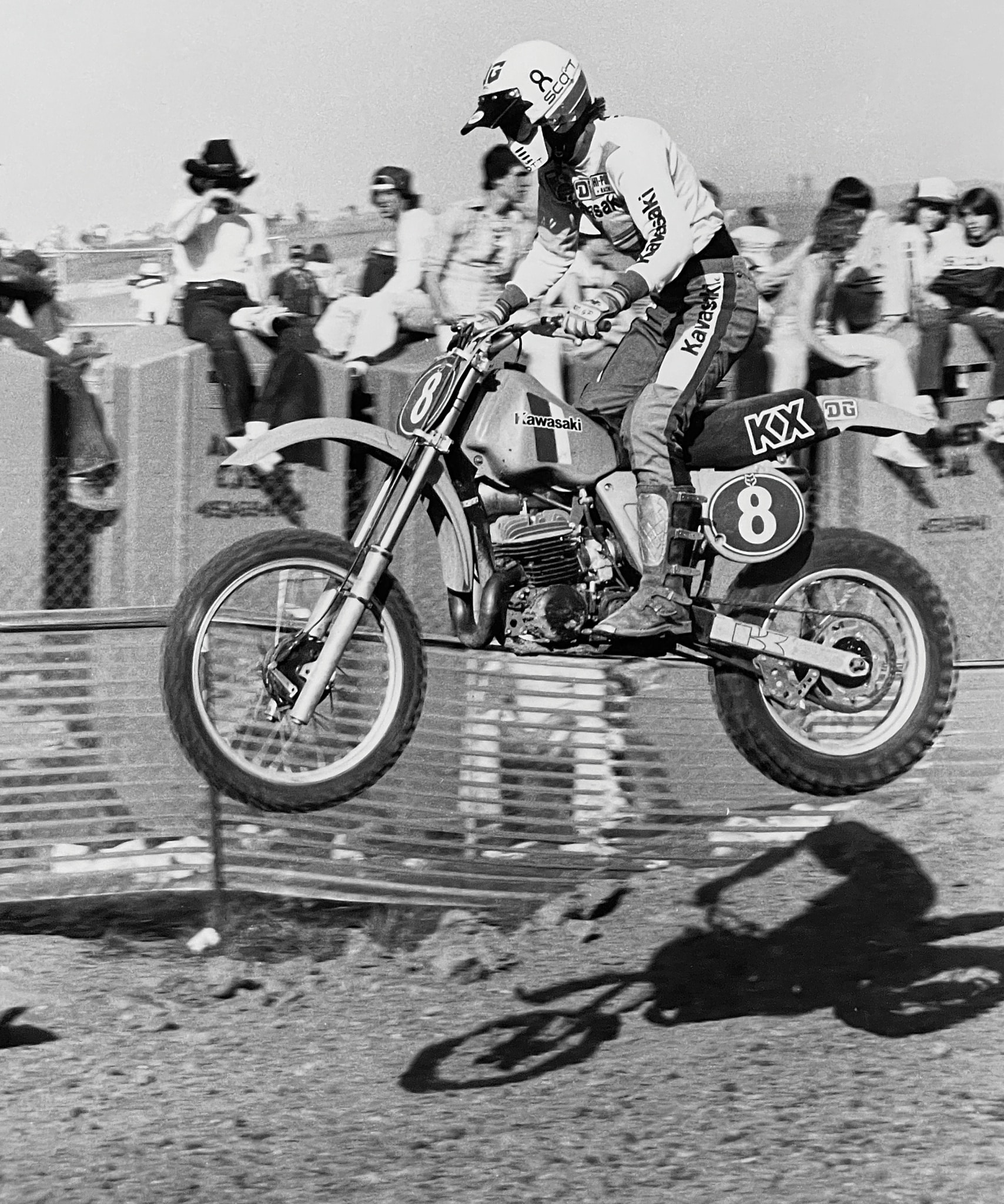 In 1981, Warren got an offer to switch to Team Kawasaki on big bikes with Roy Turner as his mechanic. It was a great deal, but unfortunately, Kawasaki changed team managers, and the new team manager wouldn’t let Warren race the last 1981 250 National—even though Warren was running championship points. They ended up paying him to sit at home in 1982.
In 1981, Warren got an offer to switch to Team Kawasaki on big bikes with Roy Turner as his mechanic. It was a great deal, but unfortunately, Kawasaki changed team managers, and the new team manager wouldn’t let Warren race the last 1981 250 National—even though Warren was running championship points. They ended up paying him to sit at home in 1982.
AND YOU LEFT HONDA? Yes, Kawasaki offered me a good deal. Roy Turner, one of our old family friends, had gone to Kawasaki. He was going to be my mechanic at Kawasaki, so I made the switch and I did well.
HOW WAS KAWASAKI? Initially, it was good, but they got a new KX250 at the end of 1980, which was super trick, but it broke all the time. There were a lot of frustrations trying to get everything worked out. I got second at two 1981 Nationals, and suddenly the team manager decided he did not want me to race the last 250 National. I was fourth in the 250 Championship series, and all I had to do was finish one moto to get fourth overall in points. He said, “No, you are not racing.”
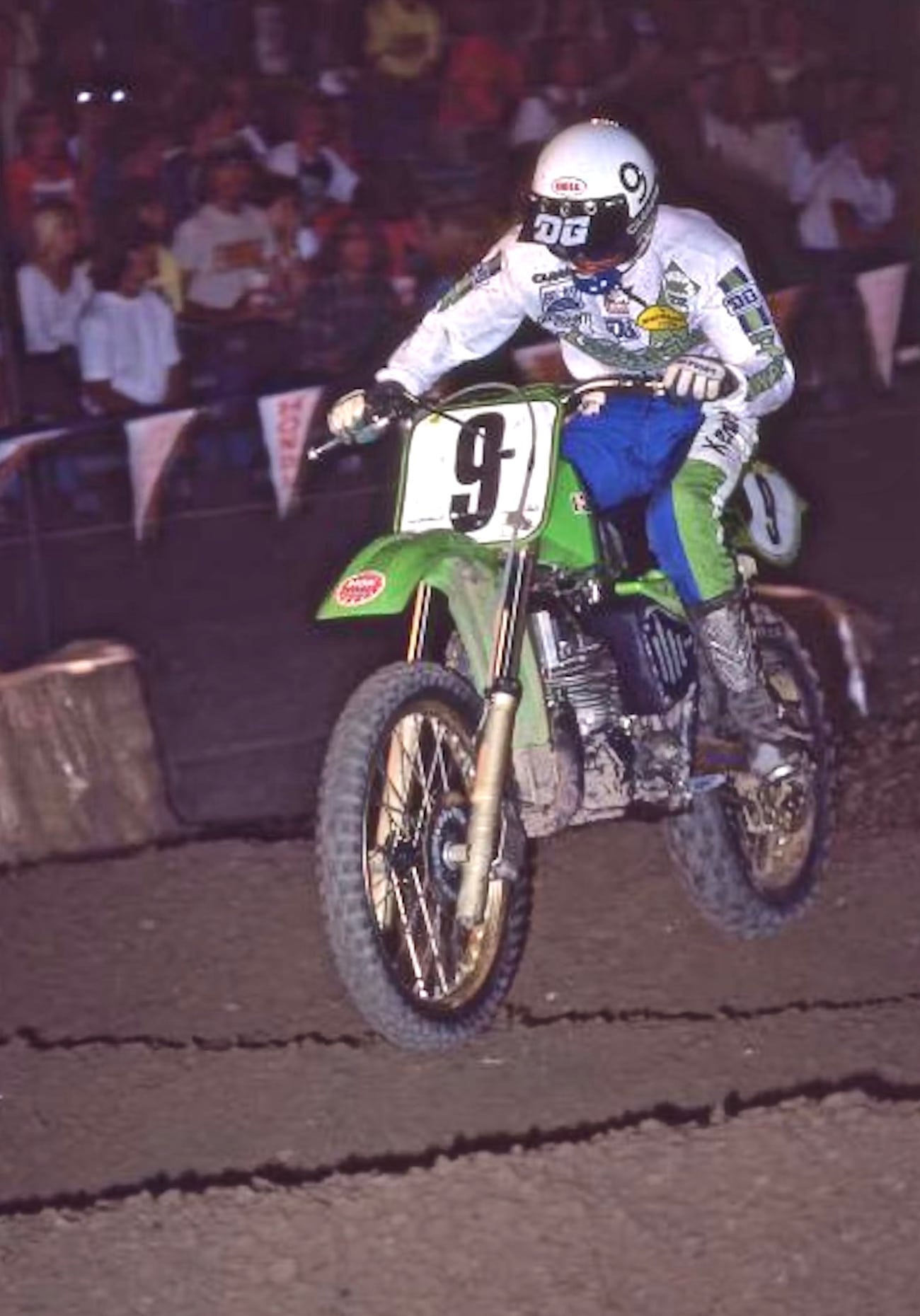 Warren left Honda after the 1979 season and went to Kawasaki. It wasn’t a match made in heaven.
Warren left Honda after the 1979 season and went to Kawasaki. It wasn’t a match made in heaven.
DIDN’T YOU HAVE A CONTRACT THAT LISTED THE SERIES YOU WOULD RACE IN? I had a lawyer look at my contract and, sure enough, he could do that. That was probably one of the most stressful times. They just pulled my ride. I had a two-year contract and was paid to sit at home. Nobody at Kawasaki would talk to me.
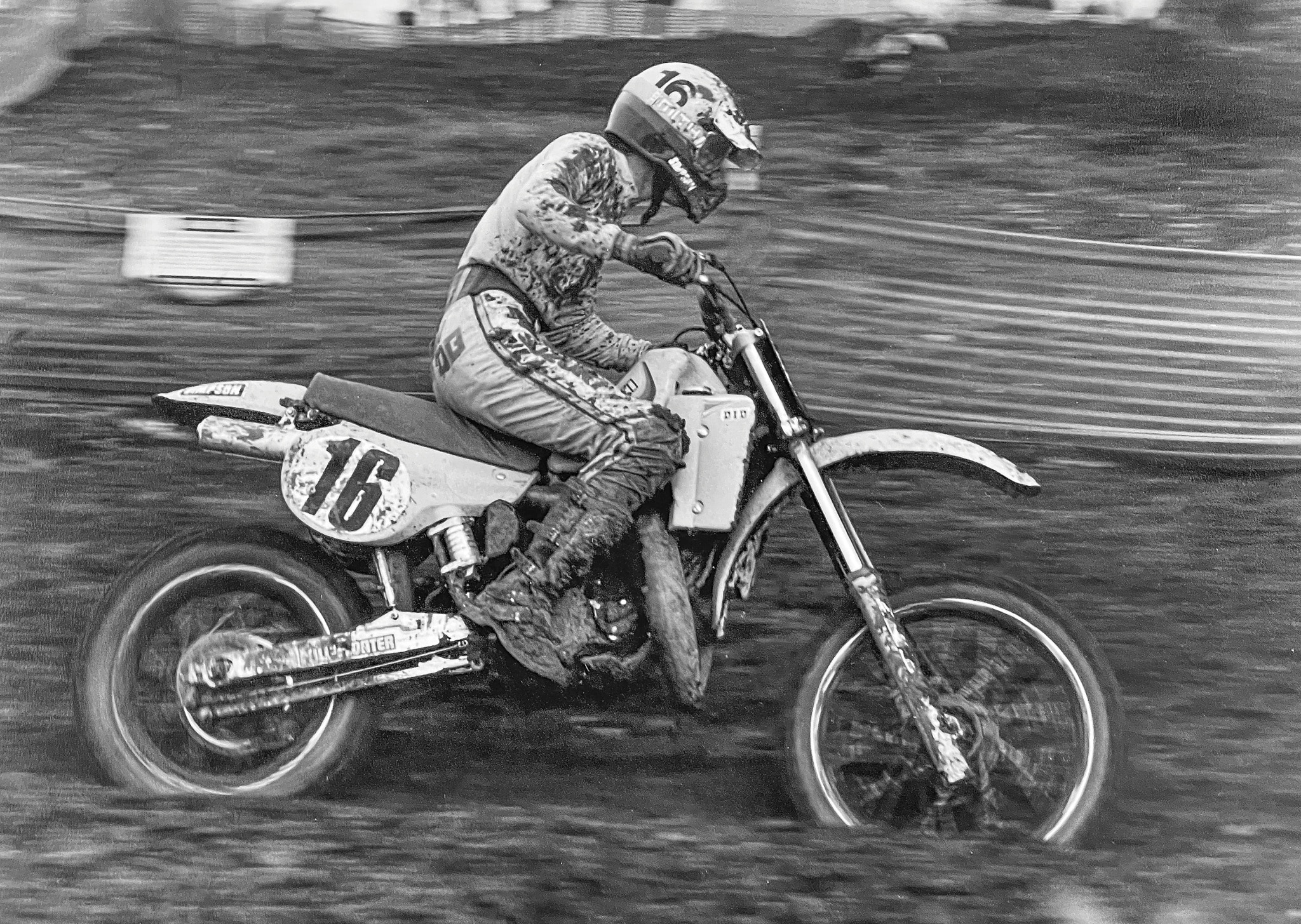 Warren raced for Honda, Kawasaki, Suzuki (above), Yamaha, ATK and BMW. He also raced Speedway, Baja and Grand National dirt track.
Warren raced for Honda, Kawasaki, Suzuki (above), Yamaha, ATK and BMW. He also raced Speedway, Baja and Grand National dirt track.
“I SAID, ‘I DON’T HAVE A RIDE. I TALKED TO YOUR AMERICAN TEAM MANAGER, AND HE SAID THAT YOU DON’T HAVE OPENINGS AT SUZUKI.’ I TOLD HIM THAT I WOULD RIDE FOR FREE, JUST GIVE ME A WORKS BIKE, MECHANIC AND BONUSES.”
WHAT CAME NEXT? I was trying to get something going for 1982. I was the only guy who had 250 National podiums in 1981 without a ride for 1982. Jon R. was working on Broc Glover’s bike in the Trans-AMA series, and I rode in the truck with John R. to the last Trans-AMA at Hangtown in 1981 just to watch.
I started talking to one of the Suzuki engineers that I had known for years, because he always tested at Saddleback when I was testing there. He asked, “What are you doing next year?”
I said, “I don’t have a ride. I talked to your American team manager, and he said that you don’t have openings at Suzuki.” I told him that I would ride for free, just give me a works bike, mechanic and bonuses.
He said, “I’ll talk to you later,” and walked down the hill into the pits.
I watched him as he went over to the Team Suzuki trucks. I was too far away to hear what they were saying, but I could read their body language. I swear that I could read their body language from 100 yards away. On Monday morning, I got a call from Suzuki team manager Tosh Koyama offering me a ride for Suzuki for 1982. And here is a funny tidbit: Suzuki did end up paying me a salary for 1982, but Kawasaki paid me more just to sit at home than Suzuki paid me to ride.
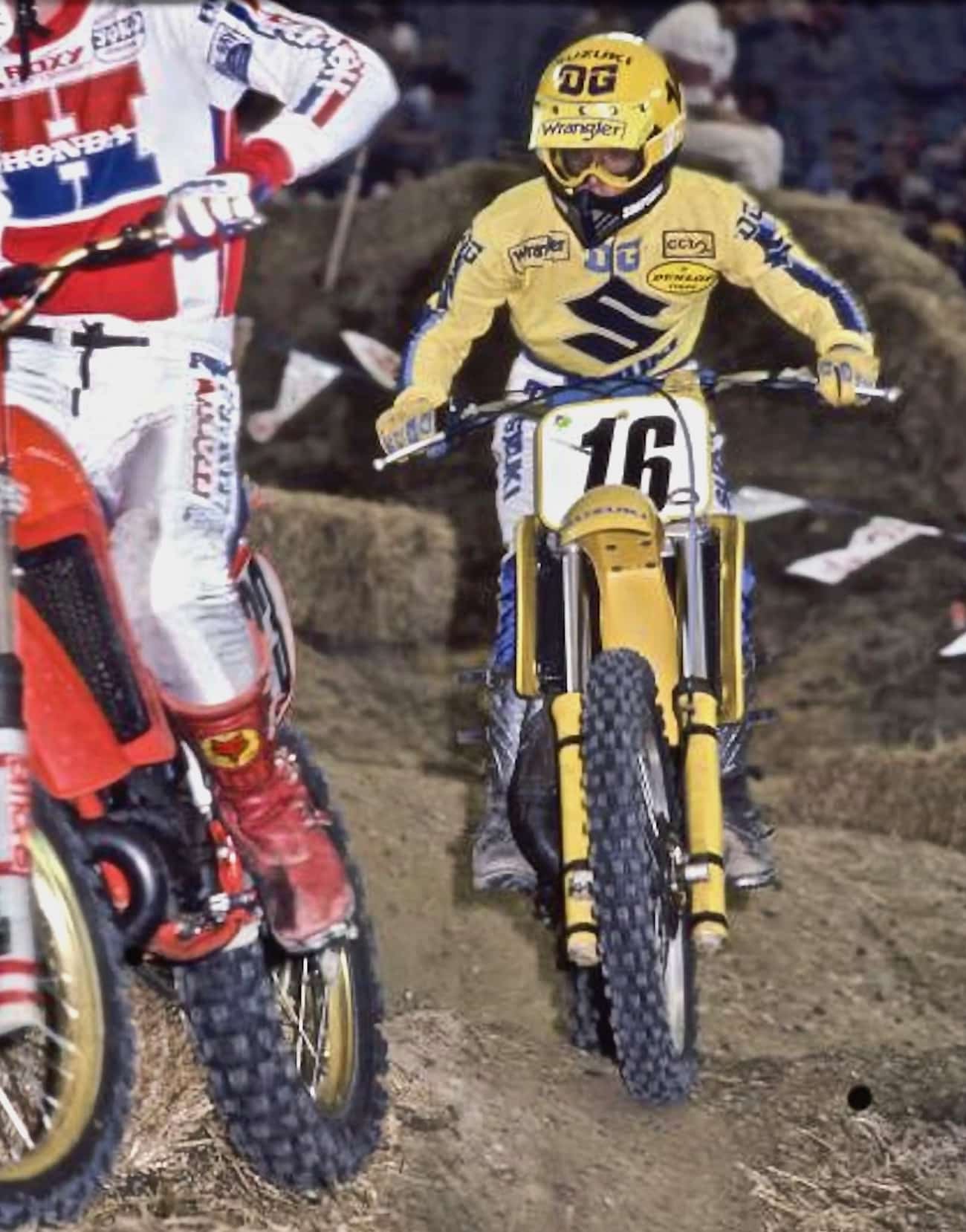 Warren on his Suzuzki (16) chasing David Bailey (23) at a Supercross in 1982.
Warren on his Suzuzki (16) chasing David Bailey (23) at a Supercross in 1982.
YOU WEREN’T WITH SUZUKI VERY LONG, WERE YOU? One year. I did well, but by that time I was aging out and they wanted younger guys. They had Alan King and George Holland coming up. They also had Mark Barnett. He almost won the Supercross title and won his third straight 125 title. Kent Howerton and I left Suzuki. Yamaha gave me some production bikes. All the companies were going through the same thing. Get rid of the old guys and hire young guys.
Yamaha gave me a 490 for 1983, and I won a couple of the Golden State races. Later, I ended up seventh in the 250 Supercross series. Then, when Ricky Johnson got hurt, they made Bob Oliver my mechanic and gave me Ricky’s works Yamaha for the Supercross series. I still rode the YZ490 outdoors, and I ended up fifth in the 1983 500 Nationals. But, at the first race of 1984, I broke my leg, and that started me down a whole new path.
DID THAT END YOUR FULL-TIME PRO CAREER? Luckily, I had saved money, and as soon as I could move around a little bit, my brother-in-law asked, “Why don’t you do some motocross schools?” I really did not want to, but I went ahead and did it. I also started helping my friend out whose dad had passed away. They had a cabinet business.
I was doing woodworking here and there and then came back and rode the last three Supercrosses in 1984. I decided after those three races that I didn’t want to be one of those guys who sticks around too long.
BUT YOU STILL DID SOME RACING, RIGHT? Yes, I put my focus on other things, but I still loved racing motorcycles. In 1984, I got my AMA Pro license, and they had just made the Steve Wise rule, so I became an AMA expert dirt tracker, road racer, speedway rider and AMA motocrosser. I was the only guy who had every professional type of race designation on my AMA Pro card. I wish I still had a copy of that.
In 1985, I got my own cabinet business going. I started doing custom cabinet stuff for people I knew, and some of them were motocross people. Then, Horst Leitner of ATK fame asked me if I would start testing ATKs for him. I did that while remodeling his kitchen.
My best weekend ever was when I raced the Costa Mesa Speedway on Friday night. Saturday night I raced the Ascot AMA Grand National TT, and then my brother Wayne and I drove all night to Hangtown to race the AMA 500 National—all in less than 24 hours. Nobody has ever done that.
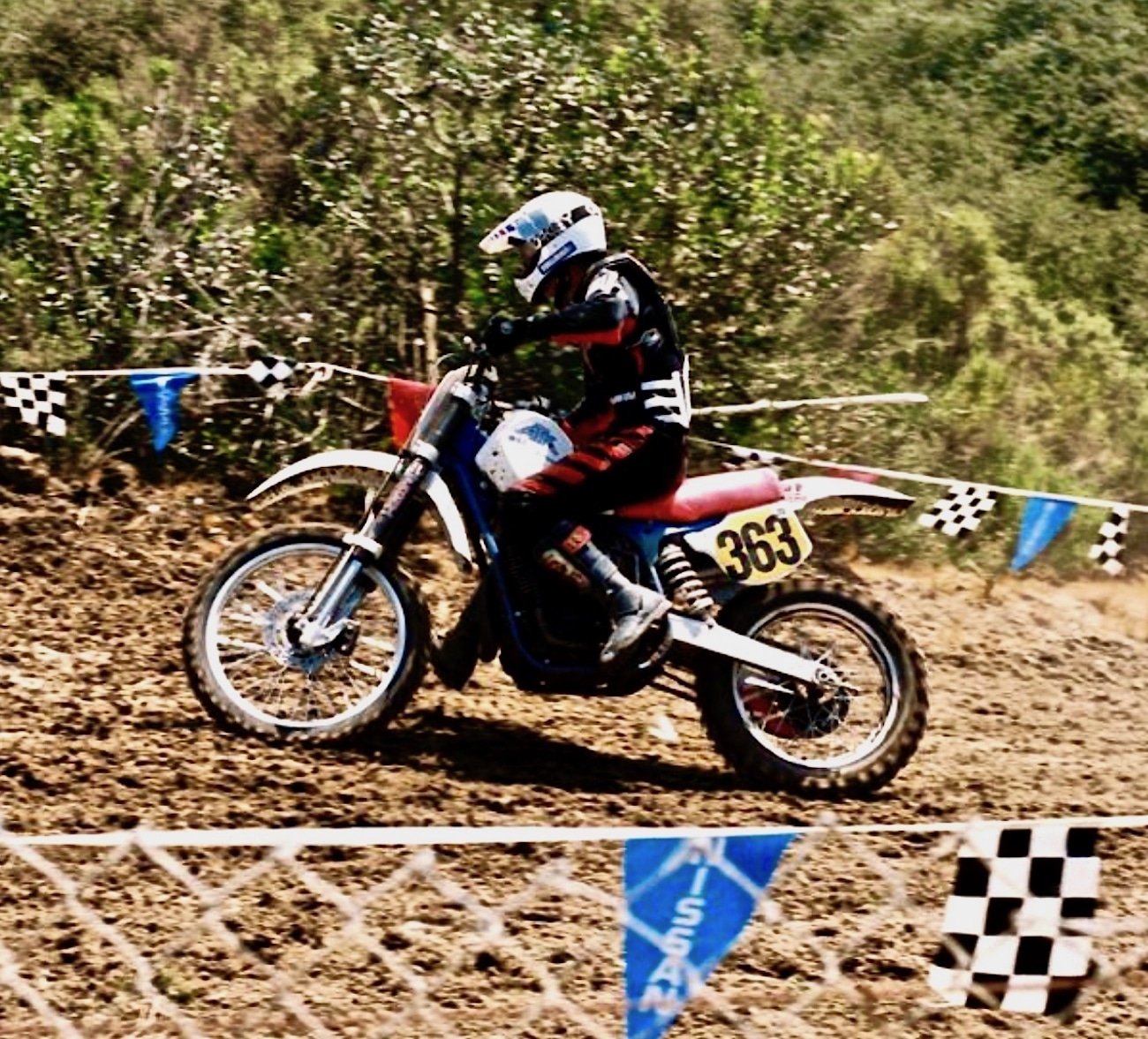 Warren didn’t quit racing after his AMA Pro days were over. He raced the Baja 1000 for BMW, raced the Ascot Grand National TT on Saturday and drove to Hangtown for a 500 National on Sunday. He even raced the Carlsbad USGP (above) on an ATK 605 four-stroke.
Warren didn’t quit racing after his AMA Pro days were over. He raced the Baja 1000 for BMW, raced the Ascot Grand National TT on Saturday and drove to Hangtown for a 500 National on Sunday. He even raced the Carlsbad USGP (above) on an ATK 605 four-stroke.
YOU LOVED RACING A DIRT BIKE, DIDN’T YOU? Yes. Two weeks after the Hangtown National, I went to Austria with my ATK and rode the 1985 Austrian Grand Prix at Sittendorf. The next month I raced the ATK at the Carlsbad USGP, and in November I raced the Baja 1000 on a BMW.
In 1986 I ended up making the main at the Ascot TT, and I earned National number 27 in dirt track. Then, in January 1987, I rode the Whisky Pete World Championship desert race. I also finished runner-up in the 1986 Second Division Speedway Championship. I had a perfect score at that event with 15 points. I won five heats for three points each and got second behind Ronnie Corry in the final.
WHAT WAS YOUR SCHEDULE LIKE AT HOME? AFTER ALL, YOU WERE A FAMILY MAN. I was married with three kids, working full-time, doing motocross schools and running a cabinet shop. I started doing cabinets for Pro Circuit Kawasaki, along with Yamaha. I built Yamaha’s Bass Fishing Tournament service truck for their outboard engines and did some high-end custom home interiors, all custom woodwork inside.
WHAT CAME NEXT? I wanted out of California. In 1990, the Honda guys said, “We have a position open. Why don’t you apply for it?” I filled out the first and only job application I ever filled out in my whole life. I got the job as a district service manager. Over the next 17 years, I covered all or part of the whole Northeast. Then, after doing that for eight years, I became a district service manager, one year for power equipment and then eight years as a district service manager for outboard motors. I retired from Honda after 30 years.
My kids grew up, got married and are doing well. The family has seven grandkids and life is good. I have no complaints.
“IT WAS A GOOD CAREER. MY FIRST YEAR IN THE NATIONALS, I GOT NINTH AND I FINISHED NO WORSE THAN SIXTH FOR EIGHT STRAIGHT YEARS. I RACED THE NATIONALS FOR 10 SEASONS—FROM 1975 TO 1985. I AM THE ONLY RIDER TO HAVE RACED WORKS BIKES FOR ALL FOUR JAPANESE MANUFACTURERS.”
YOU HAD A RACE CAREER FILLED WITH SETBACKS; DID YOU HAVE A GOOD CAREER? It was a good career. My first year in the Nationals, I got ninth and I finished no worse than sixth for eight straight years. I raced the Nationals for 10 seasons—from 1975 to 1985. I am the only rider to have raced works bikes for all four Japanese manufacturers. Other guys may have had factory rides for all four companies, but by that time they were production bikes, not works bikes—that is the unique thing.


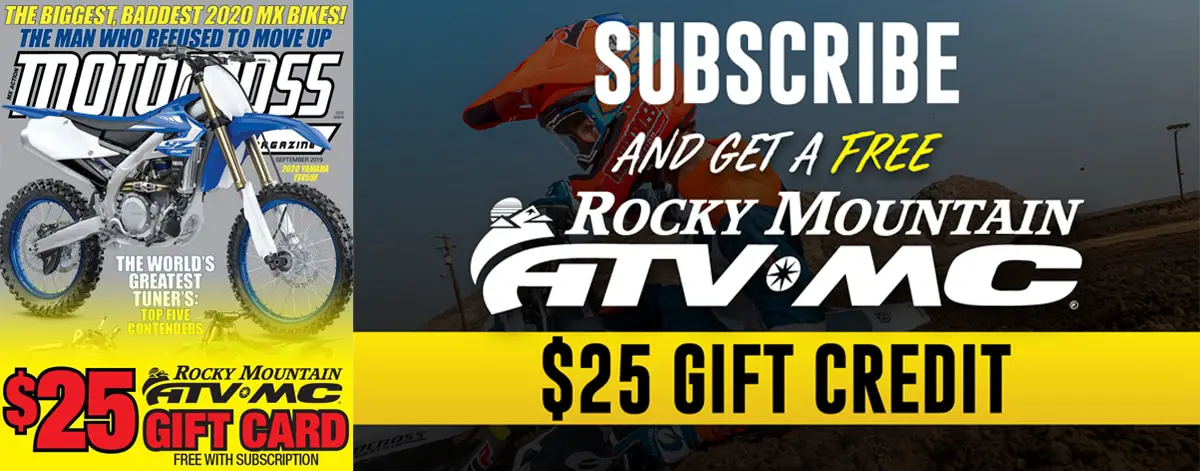



Comments are closed.